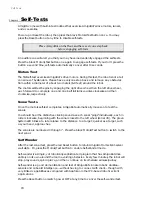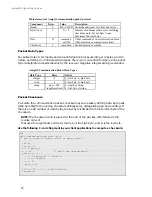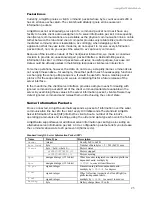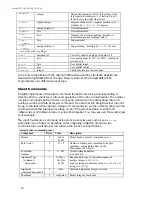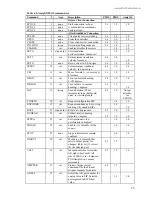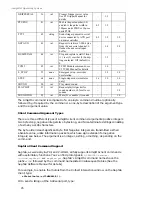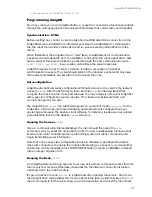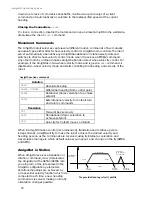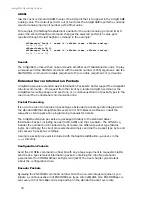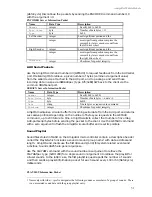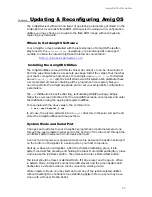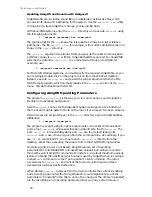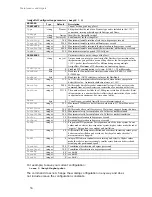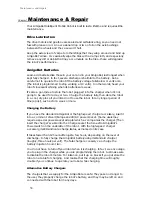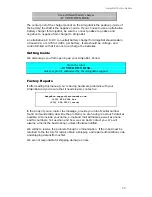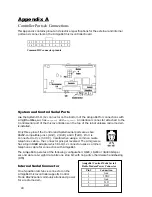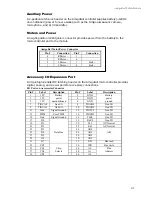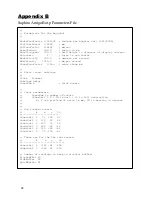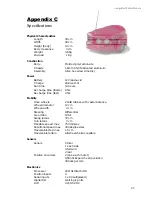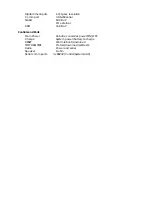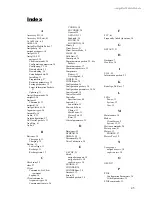
Maintenance and Repair
34
Updating AmigOS and Sounds with Amigosdl
AmigOS software, including sound files, get distributed as Intel Hex files, which
encode both data and addressing for the system. Use the
amigosdl(.exe)
utility
to download a fresh AmigOS or change your sound file data.
With Linux/UNIX systems, enter the
AmigOS/
directory and execute
amigosdl
,
using
the following arguments:
% ./amigosdl [pathname].hex <
comm-port
>
The [pathname] for the
Hex
image file is required and may be a full or relative
pathname. The file
AmigOS1_0.hex
, for example, is the current AmigOS version 1.0
image in the
AmigOS
directory.
The
comm-port
argument is optional. It lets you specify the serial communication
port that connects
amigosdl
with the AmigoBot System serial port. For Linux/UNIX
systems, the default is
/dev/ttyS0
. To communicate through /dev/ttyS3, for
example, use:
% ./amigosdl newsounds.hex /dev/ttyS3
For Microsoft Windows systems, you must specify the required AmigOS file, so you
cannot simply double-click on the program icon from the Windows desktop.
Instead, execute
amigosdl.exe
and pass it the proper arguments from the MS-
DOS Prompt program, which normally resides in the
Programs
section of the
Start
menu. The default serial port is COM1.
Configuring AmigOS Operating Parameters
The program
amigoscf
(
.exe
) is the way you view and change your AmigoBot’s
identity and operating parameters.
As with
amigosdl
, connect with AmigoBot’s System serial port on the bottom of
the robot and enable System Mode on the robot, if you haven’t done so already.
Find and execute amigoscf(.exe) in the
AmigOS
directory of your AmigOS utilities
distribution.
% ./amigoscf <comm-port>
The program accepts a single, optional parameter—the serial communication
port name (
comm-port
), whose specification is identical to that for
amigosdl
. The
port
/dev/ttyS0
in Linux/UNIX systems and
COM1
are the default serial ports
amigoscf
and
dl
use, if none is given from the command line. Accordingly, if you
use
COM1
on your Win32 PC, you may launch
amigoscf.exe
directly from the
desktop, rather than executing the program from the MS-DOS Prompt window.
On startup (after power on or Reset), AmigOS reads a set of operating
parameters from its FLASH ROM and uses these values if and until you override
them with explicit AmigOS commands. For instance, a default maximum velocity
is stored in FLASH (TransVelMax) which value is used by AmigOS when receiving a
Colbert
move
command or other “goto position” client command . The robot
accelerates to
TransVelMax
and runs at that velocity until it nears and then
decelerates as it reaches its destination.
When started,
amigoscf
retrieves from the microcontroller the current identifying
and operating parameters that AmigOS uses for your AmigoBot. Some of the
parameters, "Constants" in the Table, cannot be changed. The others, "Variables",
are the identifying and operating parameters that you may edit and save in

